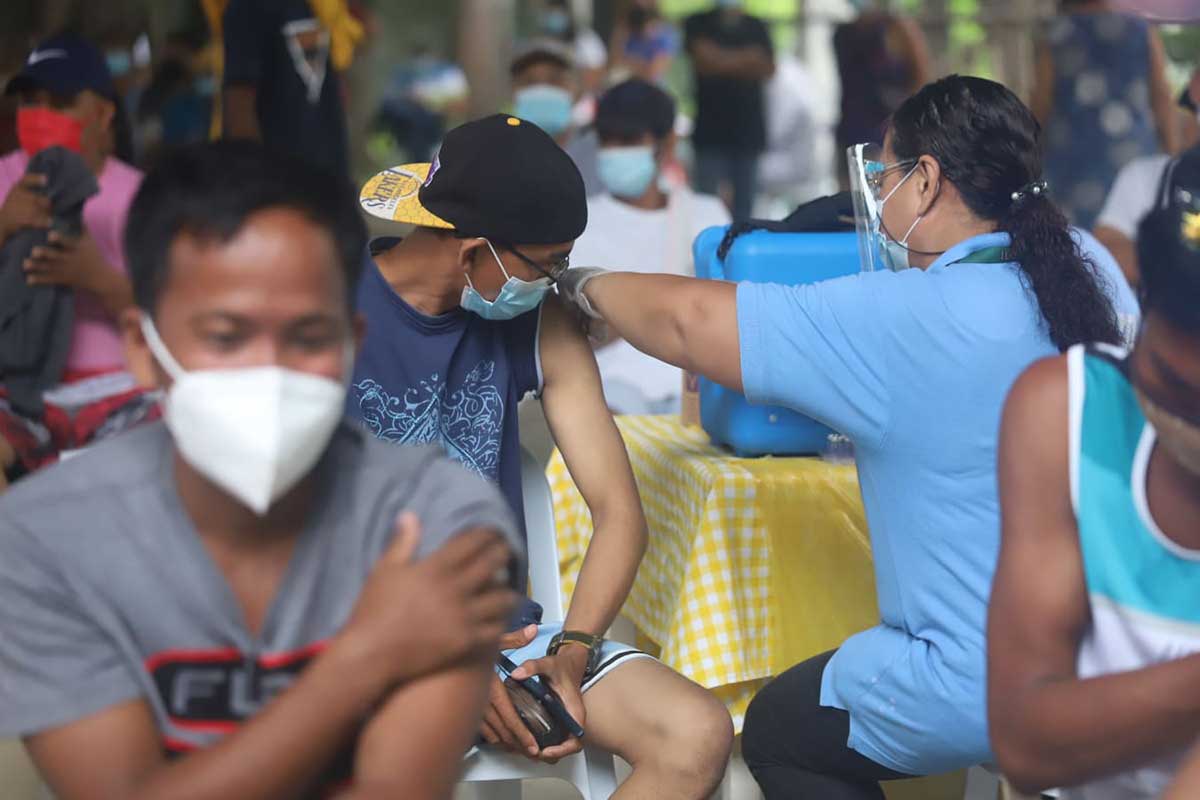
By Joseph B.A. Marzan
Iloilo City is sprinting towards the national government’s target for coronavirus disease 2019 (COVID-19) vaccinations, but the rest of the region has yet to catch up, according to the latest data from the Department of Health-Western Visayas Center for Health Development (DOH-WV CHD).
As of 12 am of Sept. 27, some 1.59 million persons in Region 6 have received at least the first dose while 1.18 million were fully vaccinated against COVID-19.
A person is considered fully vaccinated two weeks after receiving the second dose for a two-jab vaccine.
The number of fully vaccinated persons translates to 21.18 percent of the national government’s COVID vaccination target of almost 5.58 million. The rate of partially vaccinated persons is at 7.48 percent (417,207).
This also means that 71.34 percent or around 4.40 million individuals in Western Visayas still need to be vaccinated to meet the national target for the region.
Inversely, Iloilo City has already fully vaccinated 71.24 percent of its population with 238,779 having received full jabs.
At least 322,349, or 96.17 percent of the city’s population, received at least the first dose, meaning only 83,570 or 24.93 percent are still waiting to be fully vaccinated.
Bacolod City has the second fully vaccinated rate in the region (32.73 percent), followed by Aklan (20.94 percent), Antique (18.95 percent), Guimaras (18.63 percent), Iloilo province (18.51 percent), Capiz (17.72 percent), and Negros Occidental (13.34 percent).
The city also has the most partially vaccinated rate (14.45 percent), followed by Aklan (9.16 percent), Iloilo province (6.76 percent), Capiz (6.32 percent), Guimaras (5.92 percent), Antique (5.23 percent), and Negros Occidental (3.91 percent).
Having the lowest number of fully and partially vaccinated persons in the region, Negros Occidental accordingly leads in the rate of most unvaccinated (82.76 percent), followed by Capiz (75.96 percent), Antique (75.82 percent), Guimaras (75.45 percent), Iloilo province (74.73 percent), Aklan (69.90 percent), Bacolod City (52.82 percent), and Iloilo City (3.83 percent).
In a text message, Iloilo City Mayor Jerry Treñas told Daily Guardian that he was “happy and extremely satisfied” with the vaccination rate, citing the city’s prioritization for vaccine allocation by the national Inter-Agency Task Force for the Management of Emerging Diseases (IATF-MEID).
The mayor said he will continue to push for the vaccination of minors in the city, as well as booster shots of the vulnerable sectors who received the earliest doses of the vaccine.
“We will continue to work and collaborate with the public for the complete vaccination of the whole population including the minors. I continue to advocate for booster shots for medical frontliners, seniors citizens and those with comorbidities,” Treñas said.
The national government’s target rate is lower than that of Iloilo City.
The city government’s COVID vaccination target rate is at 100 percent of 525,000 which consist of 425,000 projected population, and 100,000 non-resident workers.
Based on its data as of Sept. 23, they have vaccinated up to 228,161 or 43.46 percent of their target.
NO VACCINATION FOR MINORS YET
Despite the push from Treñas and several health advocates, the DOH-WV CHD said on Monday that more evidence, as well as guidelines from the health department’s central office, were needed before 12- to 17-year-olds can get vaccinated.
The Food and Drug Administration issued Emergency Use Authorization (EUA) to COVID vaccines for minors – Comirnaty by Pfizer and BioNTech for 12 to 15 year-olds in June, and mRNA-1273 by Moderna for 12 to 17 year-olds earlier this September.
Dr. Bea Camille Natalaray said in a virtual press briefing that the National Vaccination Operations Center (NVOC) has not issued any guidelines to vaccinate minors despite the EUAs.
Natalaray added that the DOH has also been looking into other factors, such as the low number of vulnerable sectors who were fully vaccinated, and if vaccinating minors “would be cost-effective”.
“There are also other factors being considered here, like equity or if all vulnerable populations had been vaccinated, and of course if vaccinating 12- to 17-year-olds would be cost-effective. But of course, the DOH is not against not vaccinating minors. If we have enough evidence that it would be safe for our minors, we could have an advisory,” Natalaray said.
She said that the DOH-WV CHD would continue to wait for these guidelines and would focus on vaccinating the rest of the more vulnerable population while waiting.




















